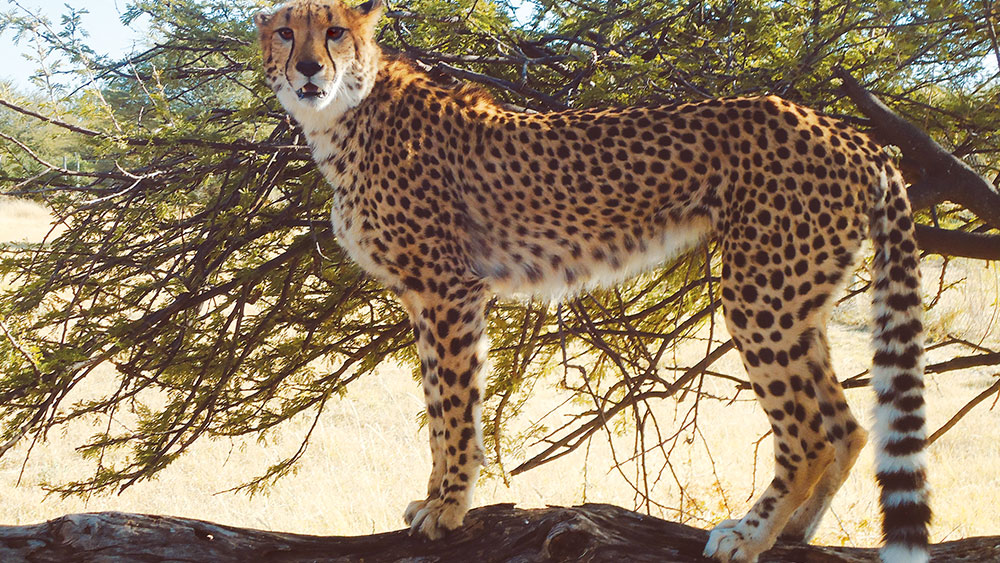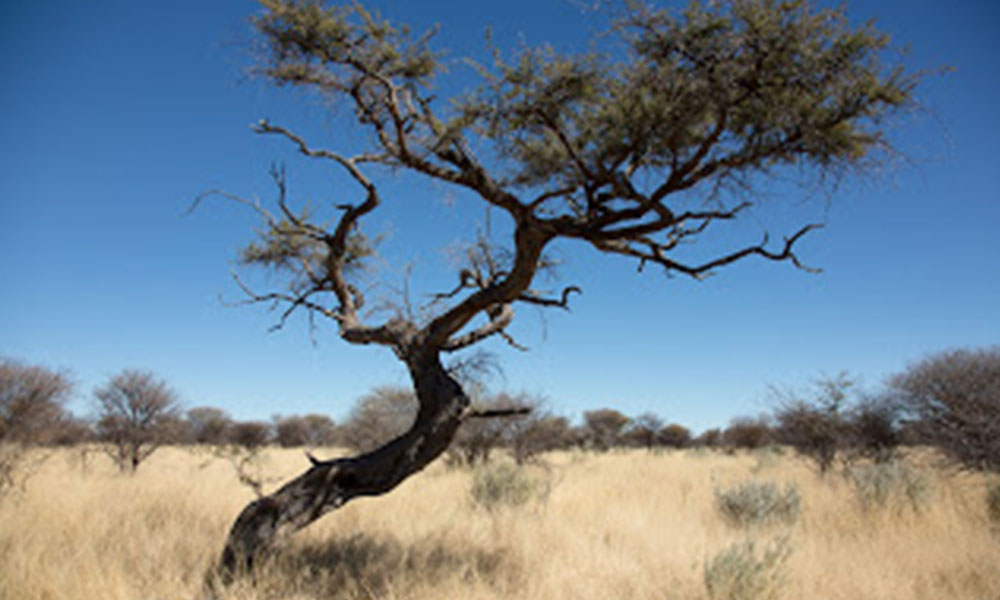Cheetah Play Trees
-

- by August 22, 2012

Cheetahs, like many other large mammals, communicate with one another via scent marking. In southern Africa, cheetahs have been observed using distinctive scent posts and repeatedly returning to the same scent posts. These posts are called “play trees” and have been used heavily by biologists to study cheetahs. For instance, CCF has been conducting a cheetah census since 2005 using camera traps (motion activated cameras) placed at these trees. When a cheetah comes to visit the tree, a photograph is taken and from that picture we can identify the individual cheetah (a cheetah’s spots are just like a fingerprint) and with enough of this data a population estimate can be determined.
Play trees are quite distinctive as they normally have a large trunk, a wide canopy, and a good view of the surrounding area. However, not all trees in the bush that seem to be suitable play trees are visited by cheetahs, so there is some quality of the tree beyond the obvious that cheetahs are looking for when deciding which trees to use. Therefore, research at CCF is currently being conducted to determine what these qualities are so that play trees may be defined more clearly. This research is basically trying to determine what makes a play tree a play tree.

A better understanding of these trees themselves and the characteristics that cheetahs are looking for in these trees will provide more knowledge into the cheetah’s scent marking behavior and their social behavior. A better understanding of this aspect of cheetah biology and ecology will further improve the design and implementation of cheetah studies as well as conservation strategies.
Related Reading
-
August 27, 2025
Sniffing Out Stories with the Scat Detection Dog Team




